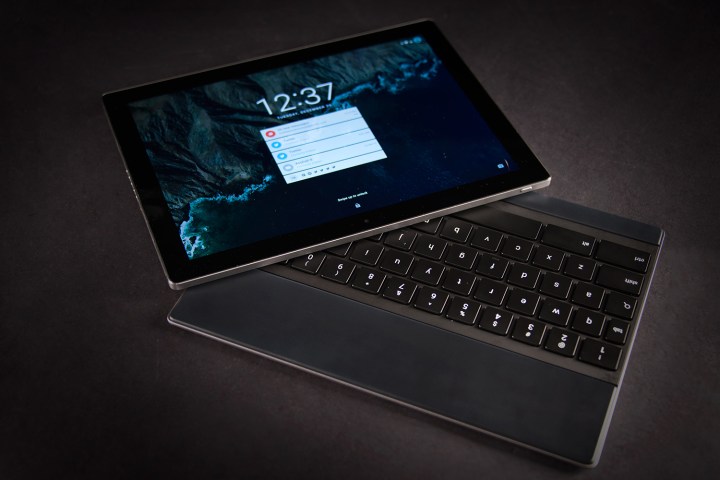
The multitasking menu has been tweaked slightly. Now, it’s more like the Pixel’s interface — when you switch apps, you get an animated grid-based system that shows the apps running in the background. Unfortunately, it’s limited to the eight most-used apps — unlike on the Pixel, scrolling through additional apps doesn’t appear to be possible.
That’s not all that’s changed. Android 7.1.2 introduces new navigation menus close in styling to the Pixel and Pixel XL — they’re now all white, and the home button is a solid circle. The settings menu has adopted the blue color scheme of Google’s phones. And the Pixel Launcher, Google’s proprietary home screen app, now comes pre-installed with an app drawer and weather widget optimized for the tablet’s screen size.
Android 7.1.2 will roll out broadly in the coming weeks.
This could lay the groundwork for a broader transformation. Rumors suggested that Google is developing a new operating system, Andromeda, that will offer a hybrid Chrome OS and Android platform. A few of the rumored features include notification syncing between Android devices enhanced with machine learning — reportedly, notifications will only display on a device that’s actually in use.
As recently as September 2016, two manufacturers were said to be working on Andromeda devices. Google is rumored to unveil the operating system this year, though Senior Vice President of Android and Chrome OS, Hiroshi Lockheimer, has said that the two operating systems are not merging.
One of those devices could be a follow-up to the Pixel C, according to Android Police. It’s the result of a collaboration between the Pixel, Android, and Chrome OS teams, and is reportedly thinner than Apple’s MacBook Air at 10mm and 12.3 inches. A backlit keyboard’s said to house a “glass trackpad” that has force detection similar to the MacBook, and an Intel Core M3 or i5 processor reportedly powers that tablet’s operating system.
Other rumored specs include 32 or 128GB of internal storage, 8 or 16GB of RAM, two USB Type-C ports, a 3.5mm headphone jack, a range of sensors, stylus support, stereo speakers, quad microphones, and a battery that lasts 10 hours.
The device will be aimed at the enterprise market, as rumor has it. Its starting price is $800 (within striking distance of Microsoft’s $900 Surface Pro 4), and it is expected to launch sometime between April and July 2017.